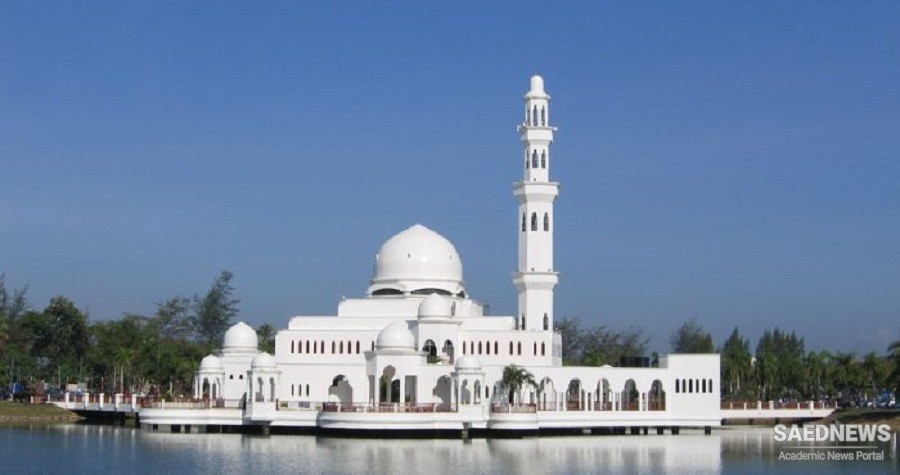The mosque floats above the lagoon of the Ibai River and is located near the Kuala Ibai River estuary featured the infusion of Arabian, Moorish and Mamluk architecture. It is a part of the Kuala Ibai Lagoon Public Park, bordering an equestrian resort and the white sandy beach facing the panoramic South China Sea.
Completed in 1994, the building of the mosque was spurred by the former Sultan of Terengganu, Sultan Mahmud Al-Muktafi Billah Shah Al-Haj and named after his mother, Tengku Intan Zaharah, the former Sultanah of Terengganu. Since then it has become a major attraction in Terengganu, as it is considered a major landmark of the state. Sited and built on a reinforced concrete platform erected on the northwest side of the lagoon, the mosque is linked via two bridges from the north and south sides of the public car park. The pristine white edifice of the mosque accommodates several facilities in its two- storeyed building, including the main prayer hall, female prayer gallery, royal lounge, mini library, Imam’s room, office, ablution areas and toilet facilities. Sheathed in off-white coating, a grand bulbous dome sits on the upper tier of the main building. Its hexagon-shaped base is made of stained glass windows, with smaller clerestory windows punctured through the dome’s sides. Similar shaped domes
in a smaller scale are located on the lower tiers across the mosque, marking the entrance porches and covered pavilions. On the Northeast side, a towering Mamluk-inspired minaret stands with Moorish- influenced horseshoe arches seen in the opening of each of its four tiers.
Many such traditional Middle-Eastern inspired design elements are embedded on the building elevation with an array of arches used as window openings and at the courtyard area. At the building facade, several projected bay-like windows are incorporated into the mosque facade. Smaller fenestrations are also arranged accordingly. Projected turrets which stand on its corner walls are used to cover the pavilions overlooking the river. The main prayer hall is sheathed in a white colour tone, formed by main columns flanking the hexagonal void under the main dome. The four front columns are decorated with attached panels, similar to mashrabiya wall panels. The qibla front wall is earmarked with a vaulted mihrab niche, with an intricate timber minbar platform located in the middle.


 MASJID KAYU SEBERANG JERTEH, Terengganu, Malysia
MASJID KAYU SEBERANG JERTEH, Terengganu, Malysia














































